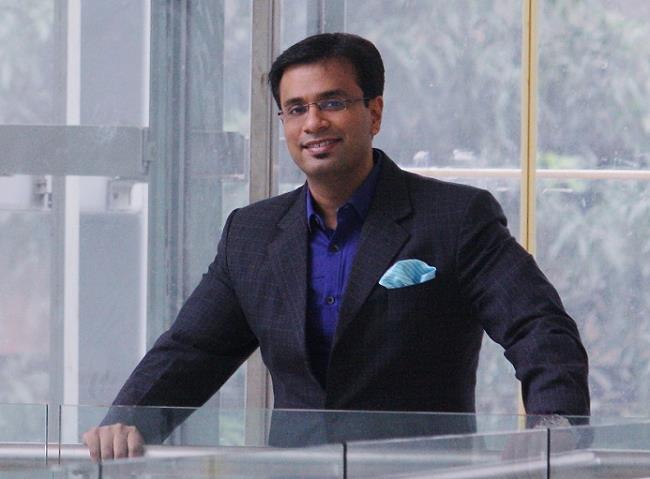While the aging process affects the entire face, it particularly is noticeable in the forehead and brow area. The skin loses elasticity and the underlying muscles weaken, leading to wrinkles, sagging skin, and a more tired and aged appearance.
Sagging or drooping eyebrows can also be a common cosmetic concern that can make a person look tired, angry, or older than they really are. Other factors such as genetics, sun exposure, and repeated facial expressions can also contribute to the appearance of sagging eyebrows.
Brow lift surgery can be a solution to these concerns. The procedure can smooth out wrinkles and lines, lift sagging skin, and create a more alert, youthful appearance.
Types of Brow Lift Surgery
There are multiple types of brow lift surgery each designed to address different issues and offer different solutions. Some of these types are;
- Endoscopic Brow lift
Endoscopic brow lift surgery has become one of The most popular surgeries in India, used for both cosmetic and medical purposes. The procedure is done by a professional cosmetic surgeon or practitioner like Dr. Debraj Shome who specializes in cosmetic procedures.
During the treatment, the surgeon makes small incisions in the scalp, typically hidden within the hairline. He then inserts the endoscope, a tiny camera attached to a long, thin tube, through one of the incisions, to see the underlying structures of the forehead and brow area.
Using specialized instruments, he lifts the forehead tissues and repositions them, smooths out wrinkles, and reduces any sagging skin. The procedure is performed under general anesthesia and takes about 1 to 2 hours to complete.
This approach has some advantages over traditional brow lift surgery techniques. For starters, the incisions are smaller, which results in less scarring. Using the endoscope also allows the surgeon to have a more precise view of the underlying structures, which can lead to more accurate and predictable results.
Another primary benefit of endoscopic brow lift surgery is that it has less recovery time. Because the incisions are smaller, there is less trauma to the surrounding tissues, and patients can go back to work and do normal activities within 7-10 days.
However, it is important to note that endoscopic brow lift surgery may not be suitable for everyone. Patients with significant sagging or excess skin in the forehead and brow area may require a more invasive technique, such as the coronal or hairline brow lift.
Patients should discuss the different options available with their plastic surgeons to determine which approach and technique is best for their individual needs and goals.
- Coronal Brow lift
Coronal brow lift is a procedure that involves making an incision across the top of the scalp, from ear to ear. Through these incisions, the surgeon can lift and reposition the forehead tissues. This approach may be more invasive, but it can be particularly effective for patients with significant sagging and excess skin on the forehead.
After the surgeon makes the incision across the top of the scalp, he/ she carefully lifts the skin and tissues to expose the underlying muscles and bone structure. He then removes excess skin and tissue and repositions the remaining tissues to smooth out wrinkles and reduce sagging skin.
To make the process smooth and comfortable for both the surgeon and the patient, a coronal brow lift is performed under general anesthesia. It may take several hours to complete and even more time for recovery, as the incisions are larger than in other brow lift techniques. Patients may require up to 3 weeks to fully recover.
Among the many advantages of the coronal brow lift, one is that it is effective in addressing significant sagging and excess skin in the forehead area. The technique allows for a more comprehensive lifting and repositioning of the forehead tissues, which results in a more dramatic improvement in the appearance of the forehead and brow area.
Keep in mind that coronal brow lift is a more invasive technique and may not be suitable for everyone. It needs a long recovery time and may result in a more visible scar along the top of the scalp.
Like with any surgical procedure, it also carries some side effects and risks of complications. It is therefore important to discuss with the surgeon about these risks, before getting started. The surgeon should evaluate the patient’s individual needs and goals and determine whether this technique is the most appropriate option for them.
- Hairline Brow lift
As the name suggests, in this procedure, the surgeon makes incisions along the hairline through which he works to lift and reposition the forehead tissues. This process is less invasive than the coronal brow lift and can be particularly effective for patients with a high hairline.
A hairline brow lift is also known as the pretrial brow lift and is used to address wrinkles and sagging of the skin in the forehead and around the eyebrows. Since it is less invasive, it makes an effective option for patients who want to avoid a visible scar along the top of the scalp.
The surgeon administers local anesthesia during the treatment to make the procedure easy and smooth. Some patients may require general anesthesia or local anesthesia with sedation. It takes about 1-2 hours to complete, and most patients are ready to return to work and normal activities within 7-10 days.
There are many advantages of hairline brow lift surgery, one of the primary ones being its effectiveness in addressing forehead wrinkles and sagging skin, to improve the appearance of the brow area and the forehead. It is also a great option as it avoids a visible scar along the top of the scalp.
The results of hairline brow lifts are usually great. However, it may not be a suitable option for patients with significant sagging and excess skin in the forehead area. This may require a more invasive technique, such as the coronal brow lift.
Note that, even while the incisions during the hairline brow lift technique are meant to hide the scar, the scar can still be visible.
The surgeon should discuss this risk and other potential complications that may occur during the surgery with their patients to let them know what to expect.
- Direct Brow lift
In this procedure, the surgeon makes an incision directly above the eyebrows and removes a strip of skin and muscle. He then repositions the remaining skin to lift the eyebrows and close the incisions with sutures or clips. Note that this technique is effective for patients with significant sagging in the eyebrows but can leave a visible scar.
Like many other surgeries, a direct brow lift is typically performed under anesthesia. Local anesthesia is administered to some patients, while to others, general anesthesia with sedation is determined to be the best option.
The procedure takes 1-2 hours to complete, depending on the technique used and how extensive the surgical area is. Most patients are able to return to work and their normal activities approximately within 7-10 days following the procedure.
One of the primary advantages of the direct brow lift is its effectiveness in addressing significant sagging in the eyebrows and forehead area. The technique allows for a more comprehensive lifting and repositioning of the eyebrows, which results in a more dramatic improvement in the appearance of the forehead and brow area.
One of the downsides of this surgery, however, is that it can leave a visible scar directly above the eyebrows. The scar can be hidden with makeup or hair, but some patients may be self-conscious about it.
The technique may also result in a more “surprised” or “wide-eyed” look if not performed carefully. That is why patients in India are advised to work with the best facilities like The Esthetic Clinics which has the best plastic surgeon who can carefully evaluate their needs and guarantee successful results.
Who is a Good Candidate for Brow Lift Surgery?
As the name suggests, brow lift surgery is primarily done to solve issues with the brows such as getting rid of excess skin around the brow area. So anyone with such issues can undergo the surgery.
Here are some conditions and factors that make a patient the perfect brow lift surgery candidate;
- Sagging or drooping brows
Saggy and droopy eyebrows don’t make the most aesthetically pleasing appearance. Even worse, such eyebrows create a tired and/ or angry look. And nobody wants to look angrily even when they are not.
Thanks to the different types of cosmetic (and medical) surgeries this issue can be corrected. If a patient has saggy and droopy eyebrows then their surgeon can recommend a brow lift surgery.
During this procedure the doctor lifts and repositions the eyebrows and forehead tissues to create a smoother, more youthful appearance, using various techniques. Some of these techniques are endoscopic brow lifts, coronal brow lifts, hairline brow lifts, and direct brow lifts.
If a patient doesn’t want to undergo a brow lift surgery, they can opt for other non-surgical treatments that can help address sagging eyebrows. Injectables such as Botox and Dysport can be used to lift the eyebrows by temporarily relaxing the muscles that cause them to droop.
Dermal fillers such as Juvederm and Restylane are another good non-surgical alternative that can be used to add volume and lift the eyebrows and the forehead area.
Another non-surgical treatment for sagging eyebrows is thread lift. This involves using dissolvable threads to lift and reposition the eyebrows and forehead tissues. The threads are placed under the skin and are anchored to the scalp to provide a subtle lift to the eyebrows and forehead.
- Deep forehead wrinkles or lines.
Another symptom that makes a patient a good brow lift surgery patient is deep forehead wrinkles and lines, especially those who have significant sagging or excess skin in the forehead.
Upon careful consideration and examination by a professional plastic surgeon like Dr. Debraj Shome, the patient can choose the best suitable brow lift surgery technique depending on their preferences and needs. The doctor will give instructions on what to do before, during, and after the treatment for optimal results.
During the consultations, it is important that the surgeon talks about the risks associated with the surgery for deep forehead wrinkles, so they can have realistic expectations, and avoid disappointments.
Other non-surgical treatments that can be used to address deep forehead wrinkles and lines include botox injections, which can help to temporarily relax the muscles that cause deep wrinkles. Dermal fillers can be used to fill in wrinkles and add volume to the forehead area.
- Excess skin in the forehead or brow area.
As we age, our skin loses its elasticity and the muscles in the forehead may weaken, leading to sagging skin and drooping eyebrows. This can create a tired or angry appearance that can be improved with brow lift surgery.
If a patient wants to tighten up the sagging skin around their forehead and brow area, then they make a good candidate for this procedure. Typically, how this is done is that the surgeon makes incisions in the scalp or along the hairline to access the underlying tissues of the forehead and brow area.
He then lifts and repositions the tissues to create a more youthful and lifted appearance. This may involve tightening the underlying muscles, removing excess skin, and repositioning the eyebrows.
Other techniques that professionals use to perform a brow lift surgery include the endoscopic brow lift, coronal brow lift, hairline brow lift, and direct brow lift. Each technique has its own advantages and disadvantages, and the choice of technique will depend on individual needs and goals.
Some side effects of brow lift surgery include swelling and bruising. This usually resolves within a few weeks and can be managed by cold compress and painkiller medication to ease the pain. It is important for patients to follow all pre-and post-operative instructions to ensure a successful outcome.
Other treatments that can be used to address excess skin in the forehead or brow area include Botox injections and dermal fillers. Botox can be used to temporarily relax the muscles that cause the skin to sag, and dermal fillers can be used to add volume to the forehead and brow area.
- Uneven eyebrows or asymmetrical appearance.
Anyone who wants to address uneven or asymmetrical appearance can also go for a brow lift surgery. Uneven eyebrows can be caused by genetics, aging, previous surgeries, and other factors.
To tighten the eyebrows, the surgeon can get rid of excess fats, muscle, and tissues around this area, then lift and tighten the remaining skin. Patients may experience swelling and bruising after the surgery, which usually subsides within a few weeks.
To control the pain and the swelling, patients can use remedies such as cold compress or go to their surgeon for prescribed medication, especially if the symptoms are severe.
Following the surgeons’ guidelines throughout the procedure is crucial for faster and more efficient healing. Patients may be asked to make some adjustments in their lifestyle habits such as making some dietary changes, stopping smoking and drinking alcohol, avoiding heavy exercises and strenuous activities, and more.
It is also important for patients to discuss the risk and complications that may occur during and after the surgery and ways to minimize them. Having this information will help them know how to deal with the complications, and not to panic.
They should also know what to expect as the end results, and what the surgery can and can’t achieve, in order to avoid disappointment and further unnecessary procedures.
What to Expect Throughout the Procedure
Before the procedure
Before a patient starts to work with any brow lift surgery clinic in India, they first must do their due diligence to determine if the facility is a good fit for them. There are many factors that the patient should check. They include;
Reputation; this is probably the very first thing to check. Patients should check what other patients are saying about the clinic. If the reviews are satisfactory, they should go ahead and schedule a consultation appointment with their plastic surgeon.
Experience; patients should only work with qualified surgeons who have extensive experience in the field of plastic/ cosmetic surgery. Checking the track record of the doctor is one of the sure ways to guarantee the best results possible.
Brow lift surgery cost; another important factor is to check the brow lift surgery cost. This will help the patient weigh their option and choose a surgeon they can afford. It is also important to note that high cost doesn’t always mean great results. Be wise.
During the consultation with the surgeon in the initial stage, the doctor will assess the patient’s needs and explain the recommended procedures. They will also discuss the benefits, risks, and instructions issued to ensure optimal results.
During and after the procedure
Brow lift surgery is typically performed under general anesthesia and can take several hours depending on the technique used. After the procedure, patients can expect to experience some side effects such as swelling, bruising, and discomfort in the forehead and brow area.
Pain medication and ice packs can help manage these symptoms, and patients are typically able to return to their daily life activities within 7-10 days.
It is important to follow the surgeon’s instructions for post-operative care, including keeping the incision sites clean, avoiding strenuous activity for several weeks, avoiding direct sun exposure, and wearing sunscreen to protect the healing skin.


